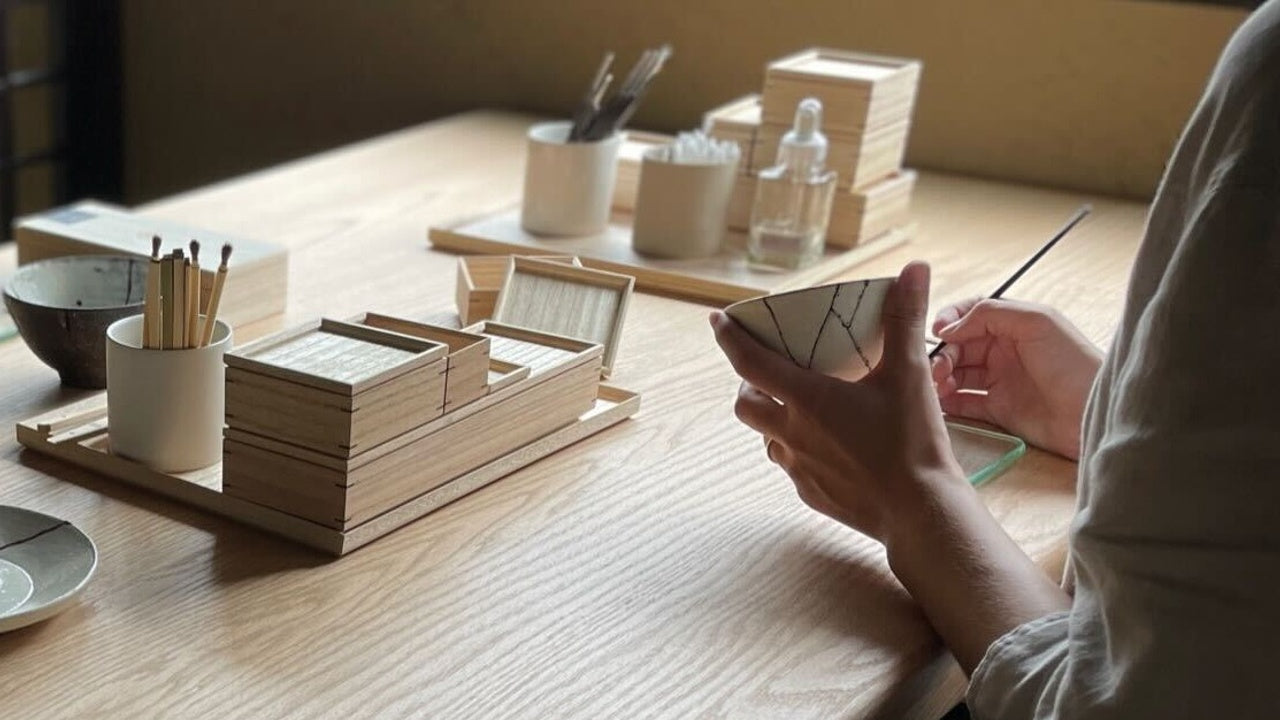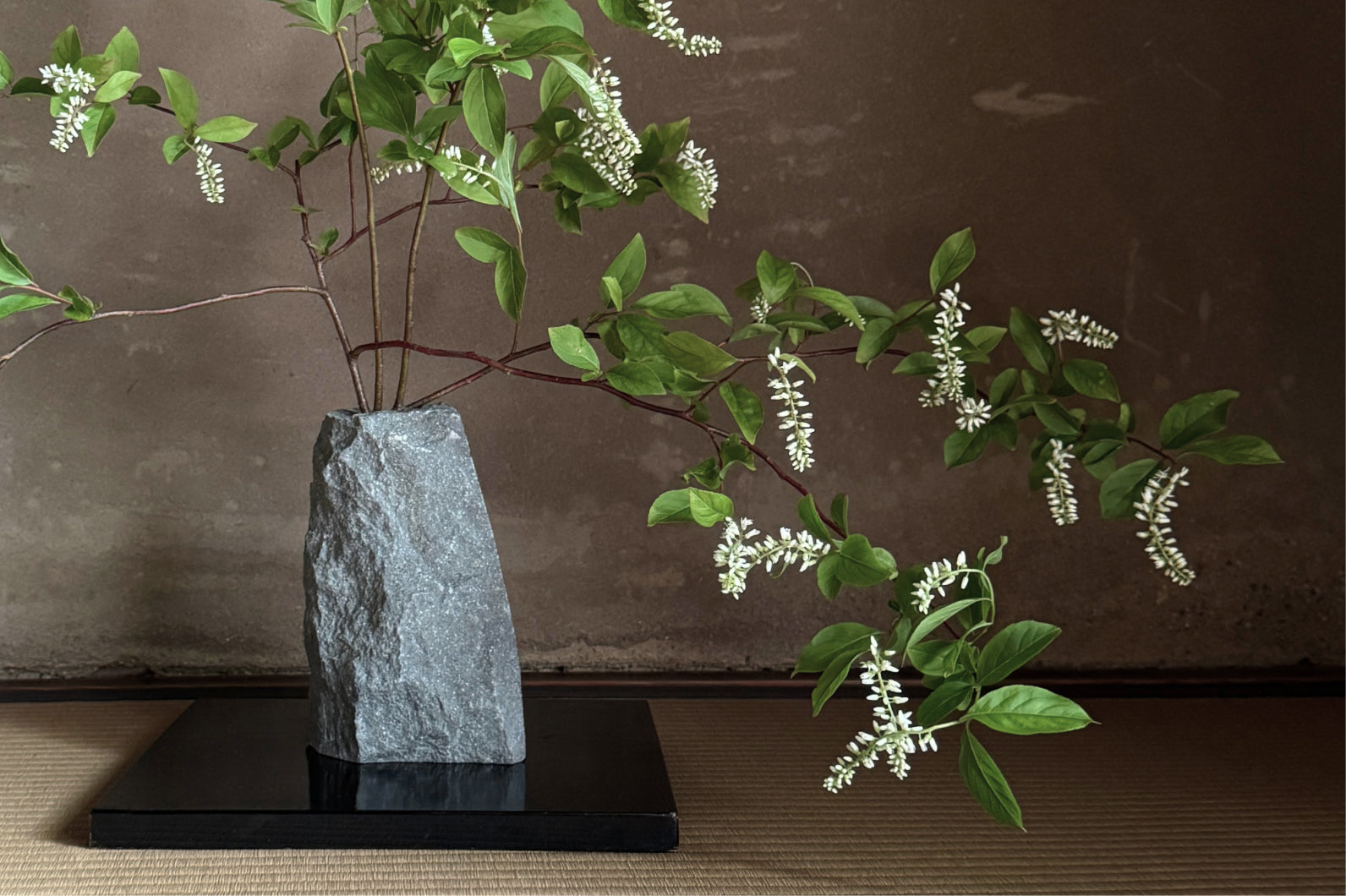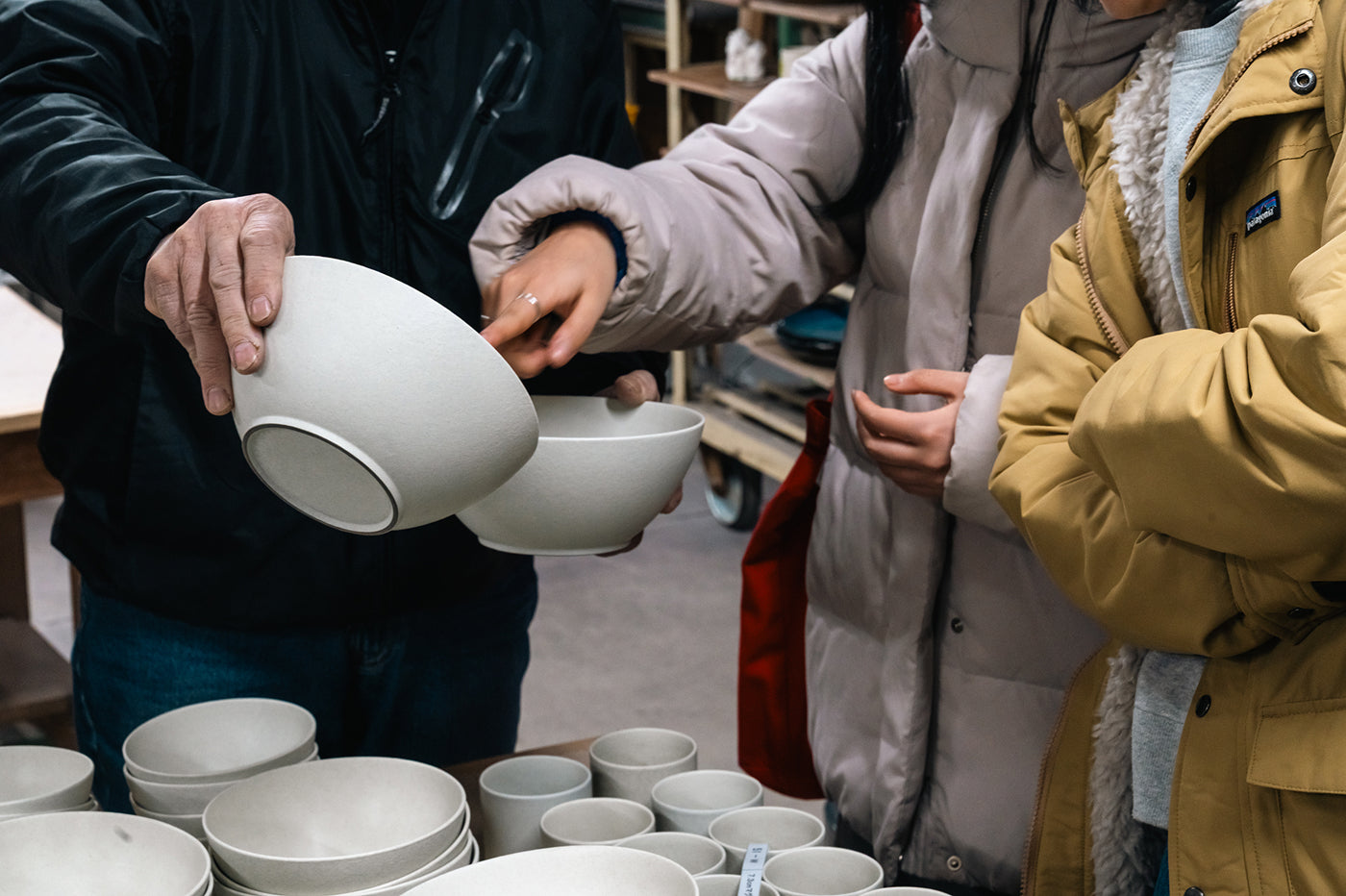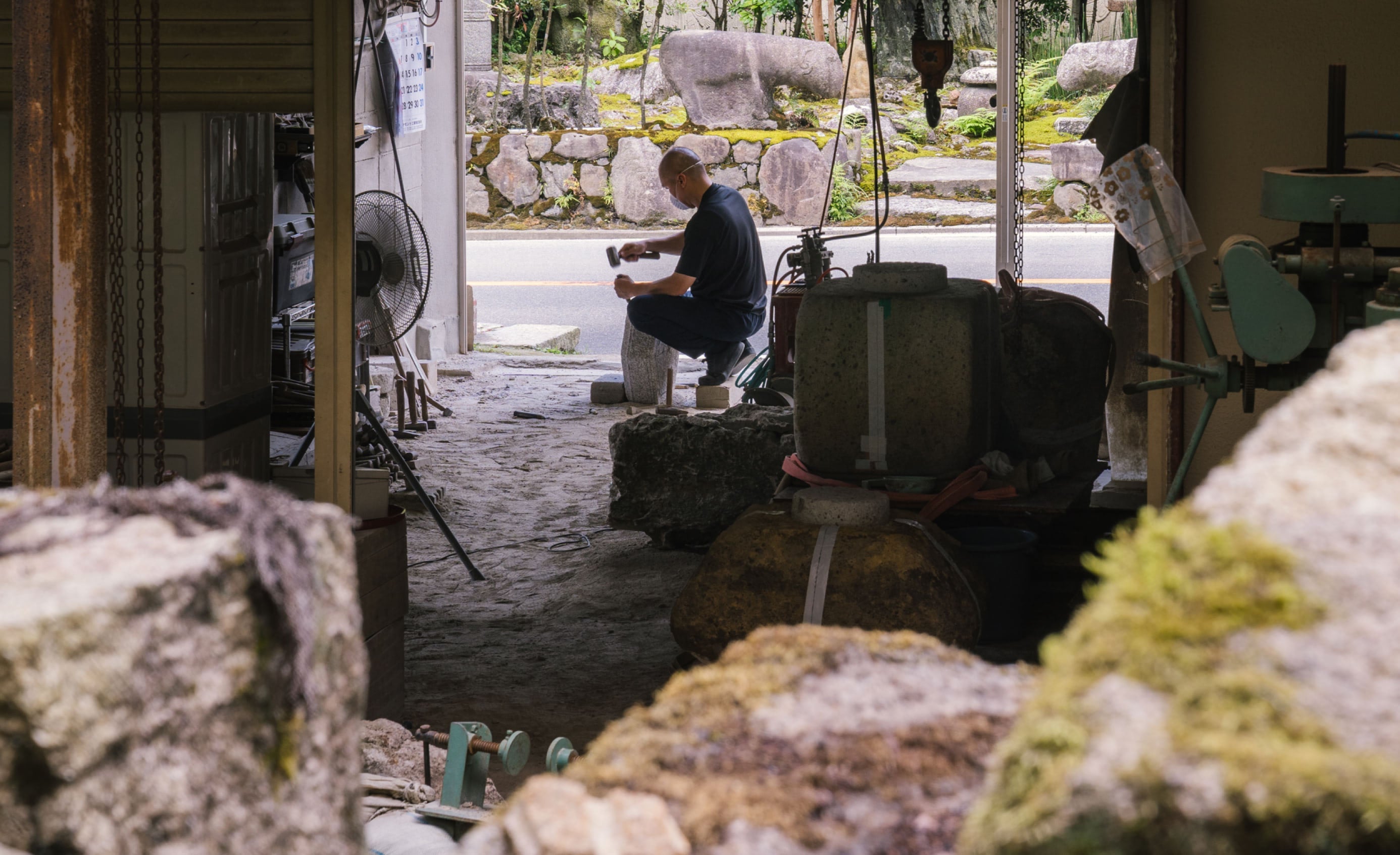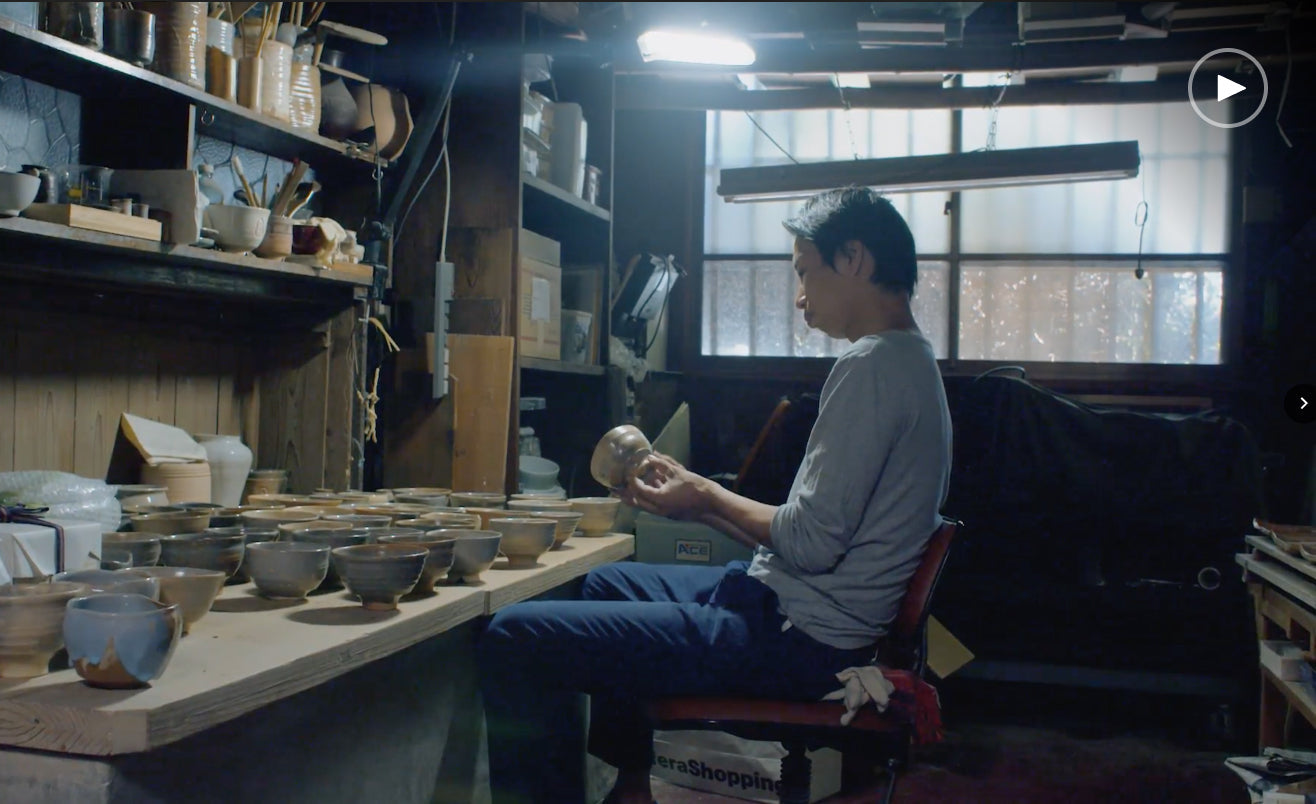In-studio classes provide guided practice of the art of kintsugi, to acquire the necessary skills to repair your own wares. You can certainly learn kintsugi through our Master Class tutorial videos, instructional leaflets, and online lessons, but sometimes, if you're like us, nothing beats in-person learning.
What are the benefit of taking in-studio kintsugi classes?

① THE RHYTHM OF THE SEASONS
Tableware is said to be pieces of art that are only complete once food has been plated. So it is only natural that the repair process of tableware is intrinsically linked to the appreciation of the four seasons. In Summer, when Japan is hot and humid, urushi lacquer cures quickly. During this time of year, we take a brisk break to refresh our souls with iced tea before diving into the next step of kintsugi repair. In the Winter, when it's cold and dry, urushi takes much longer to cure, so we can be a bit more leisurely and sip hot tea to warm our souls. The pace of urushi is a reflection in the rhythm of each season.
② LIKEMINDED CAMARADERIE
In addition to receiving tailored step-by-step support and in-person guidance and advice based on your unique wear, there's something very special and highly educational about seeing other real-life examples. There are loads of repairs-in-progress at the studio, and there is much to be learnt from watching fellow students repair their wares too. Sharing in the challenges, techniques, and small celebrations of each step of repair, makes the experience that much more enjoyable.
③ THE PILLARS OF LIVING
In Japanese culture, the three pillars of living are said to be clothing, food, and home. Everything we do and that we create, fall into one of these three categories. In our restored 100-year-old Kyoto-style machiya townhouse, we are surrounded by the work of professionals whose skills have been passed down from generation to generation. From chaki tea tool craftspeople whose work goes back 20 generations, to earthen wall-making with a 16-thousand year history in Japan. Learning craft technique amongst these four wall of POJ Studio in Kyoto, is an experience in itself.
④ THE BIRTHPLACE OF KINTSUGI
We are located in Kyoto, the old capital, where much of Japanese culture as we know it now was birthed and has matured. So just by being in this city, you are in the direct presence of historical and cultural references of the arts and of restoration techniques. And of course, you breathe in terroir where kintsugi came to be. Shogunate Yoshimasa Ashikaga, whose palace is now called Ginkakuji, called upon the artistry and science that is urushi lacquerware to repair cherished tea bowls in the most beautiful and durable fashion.



